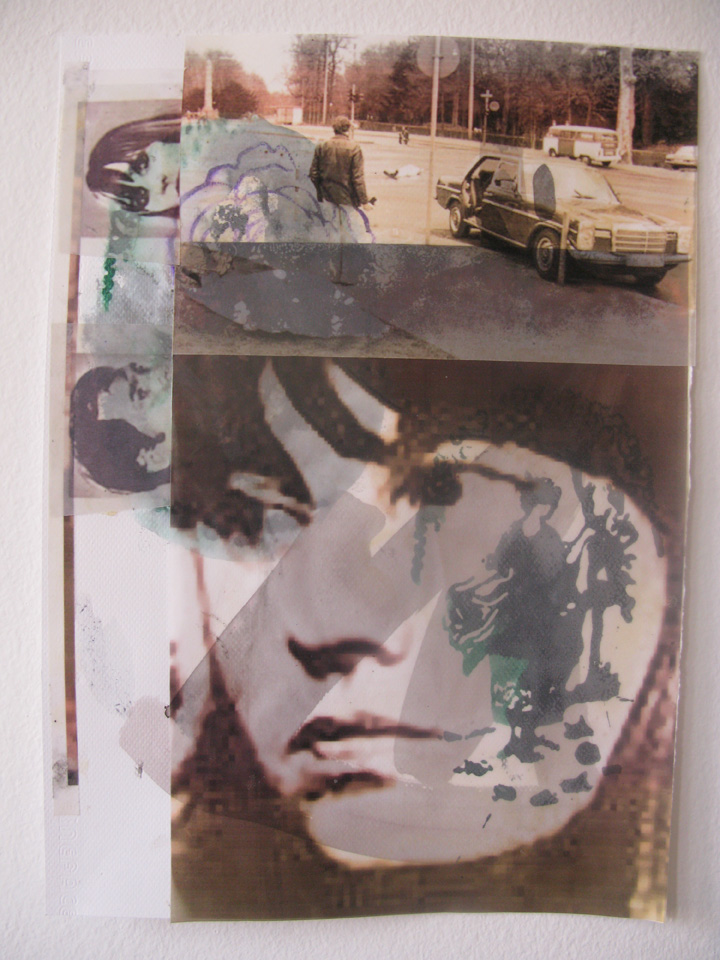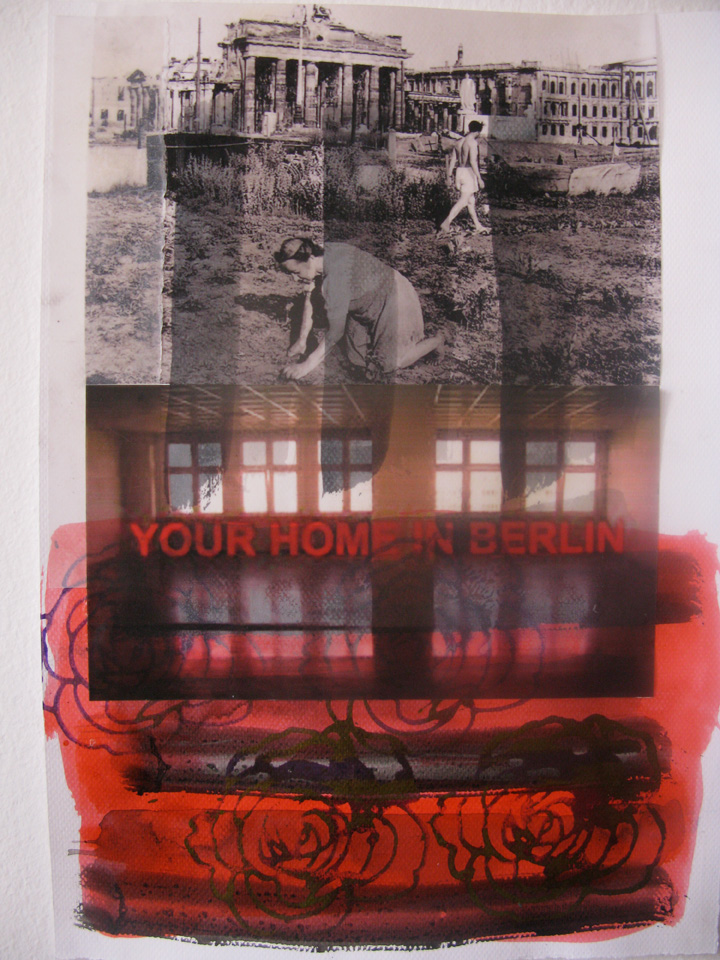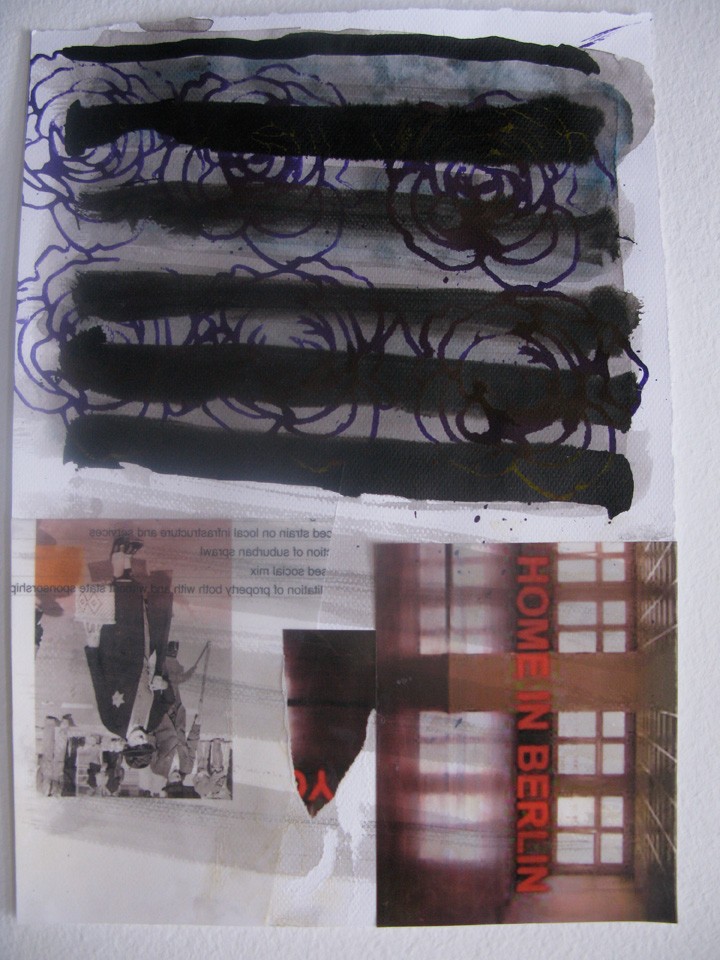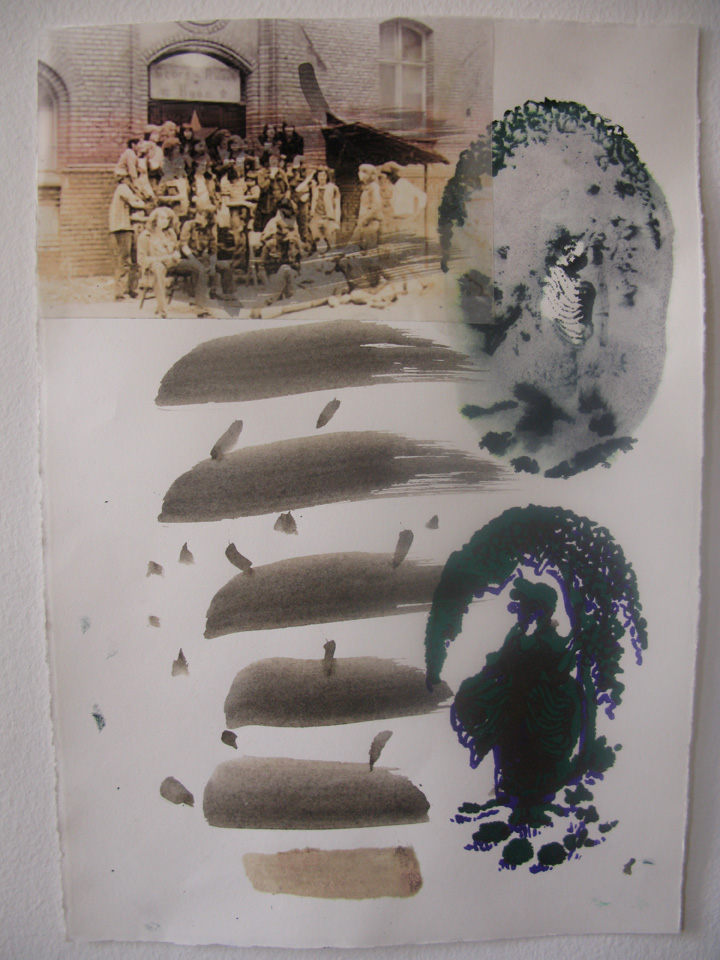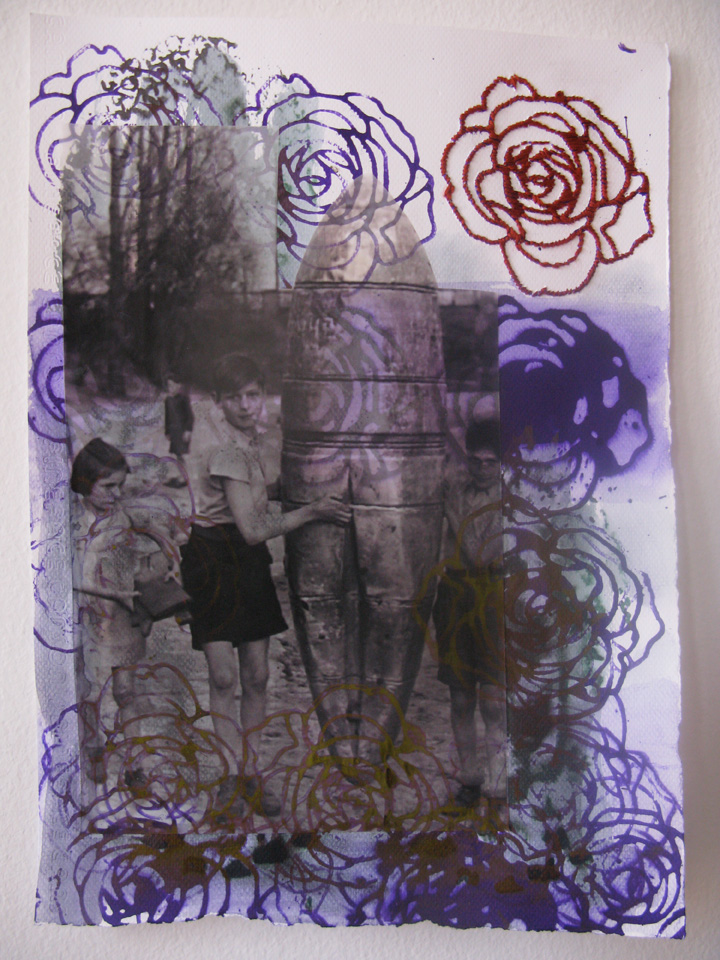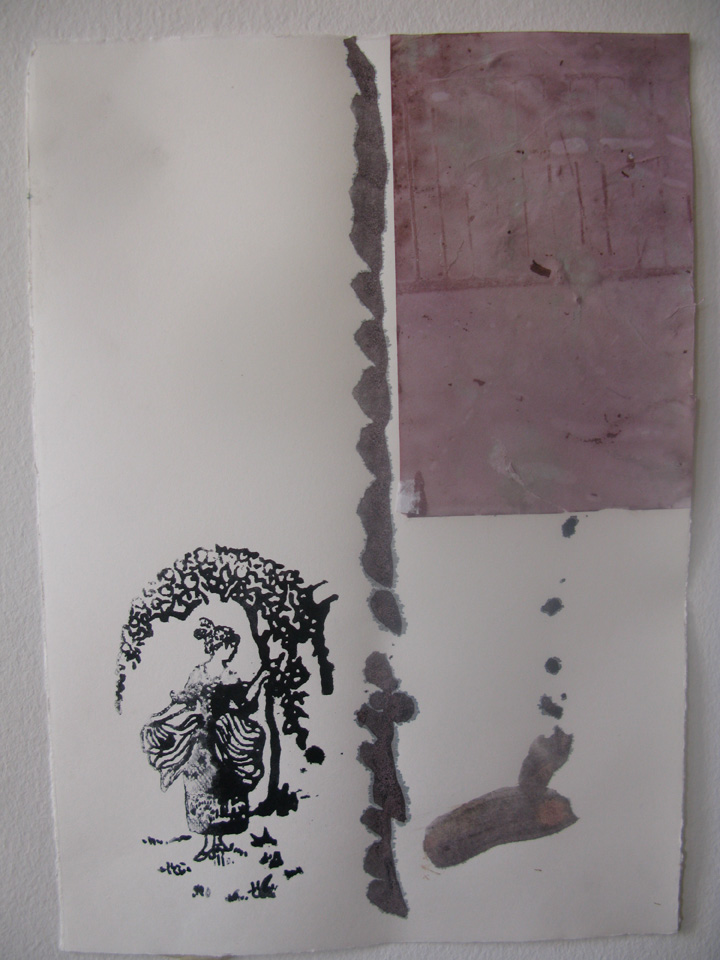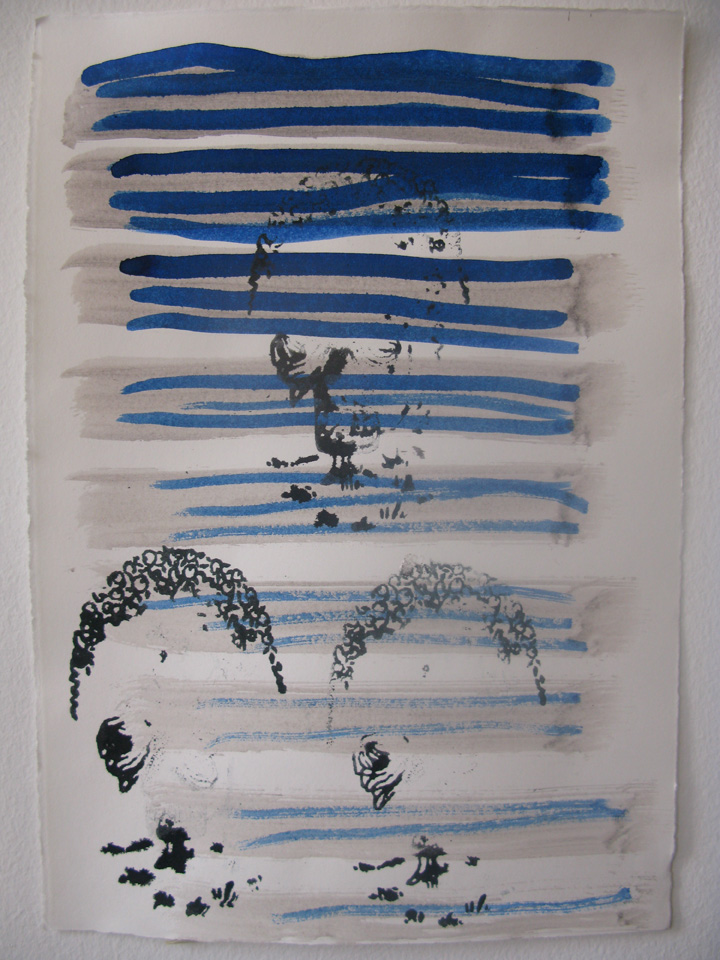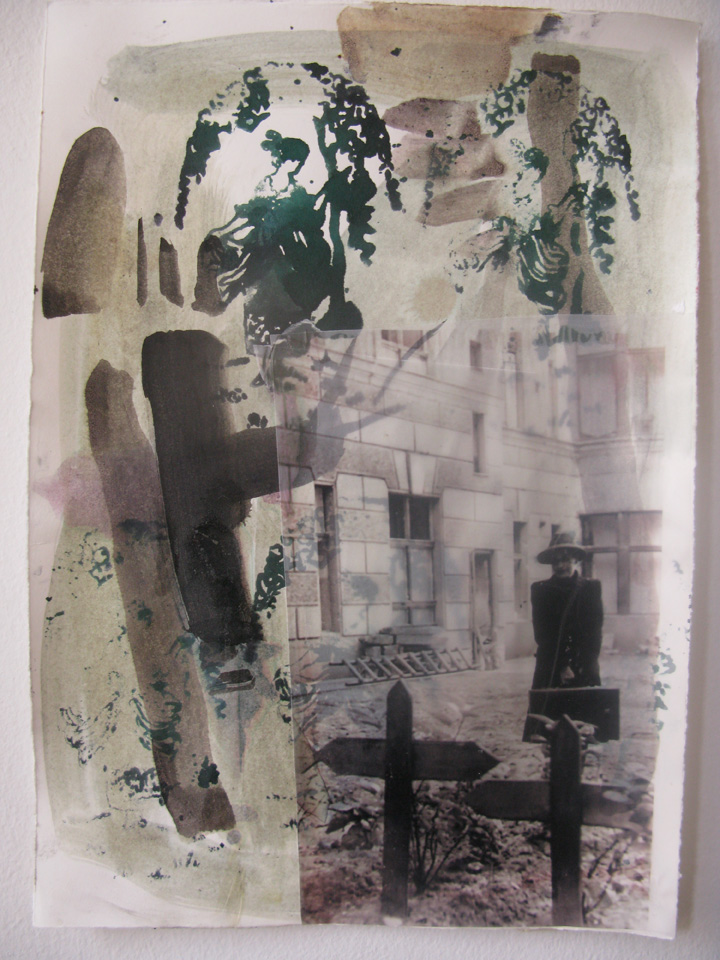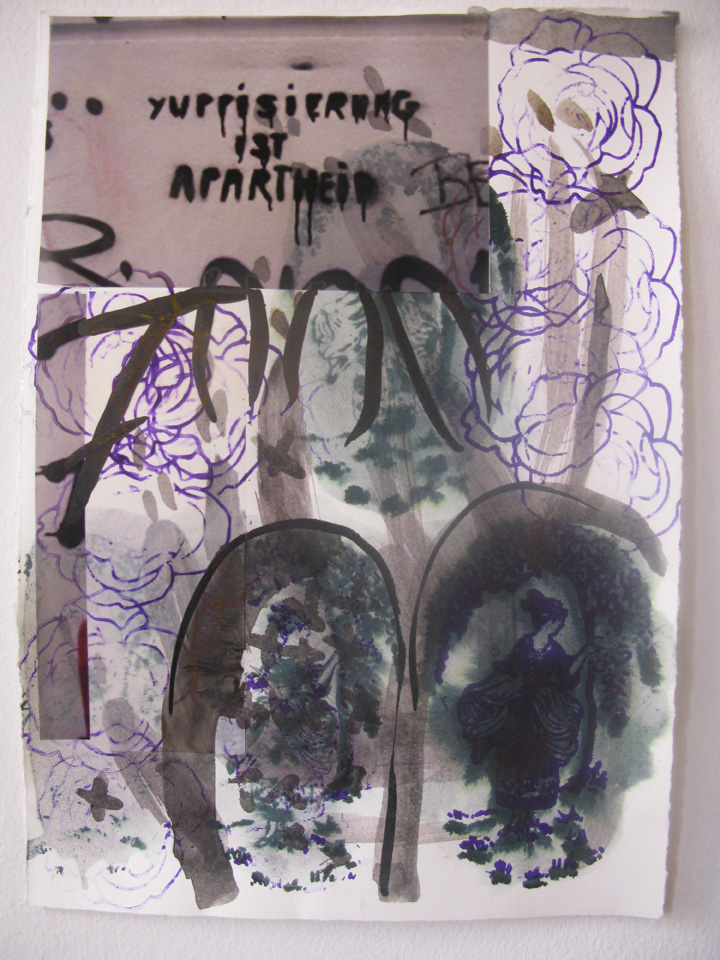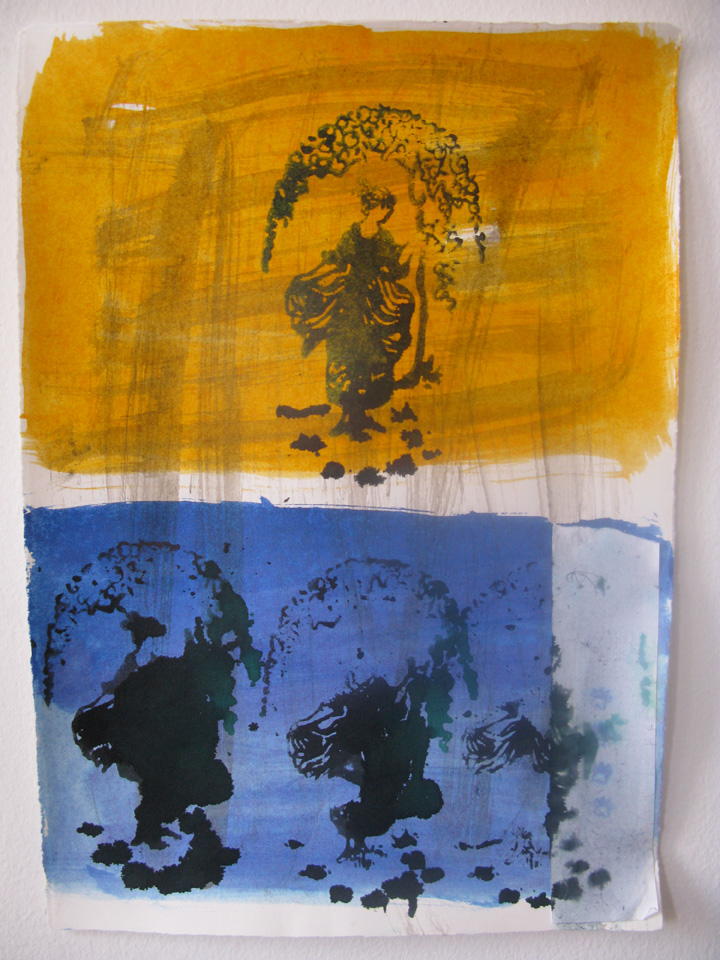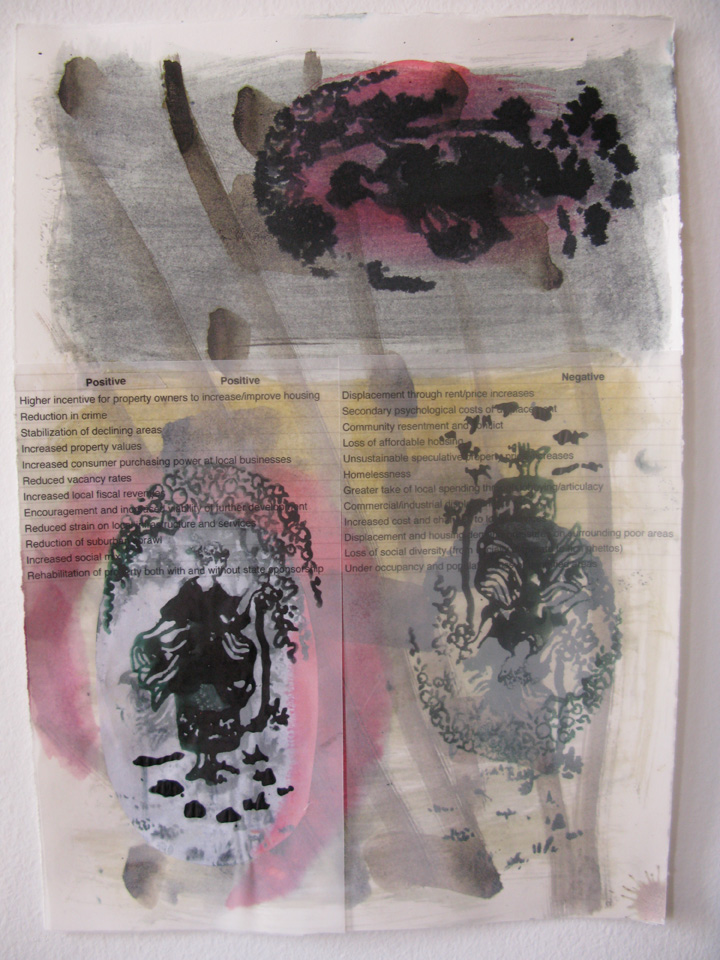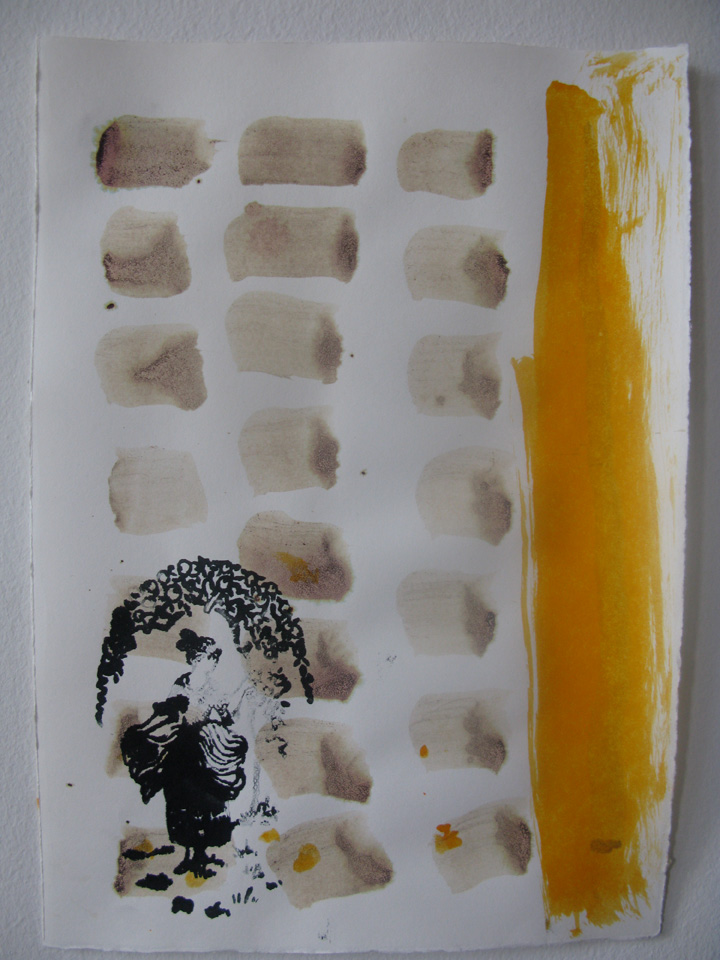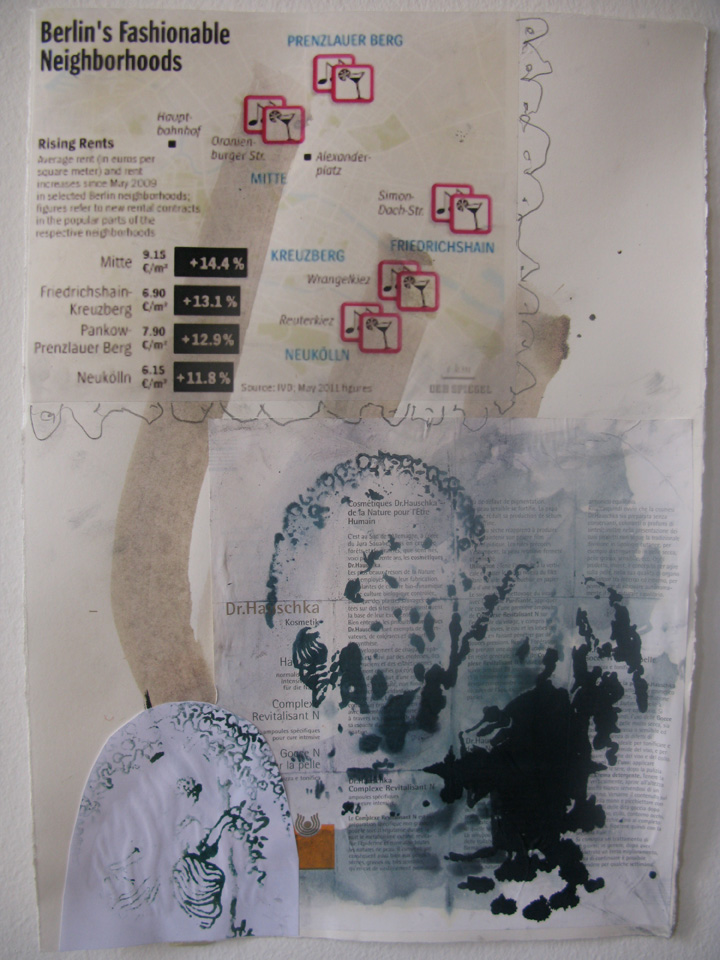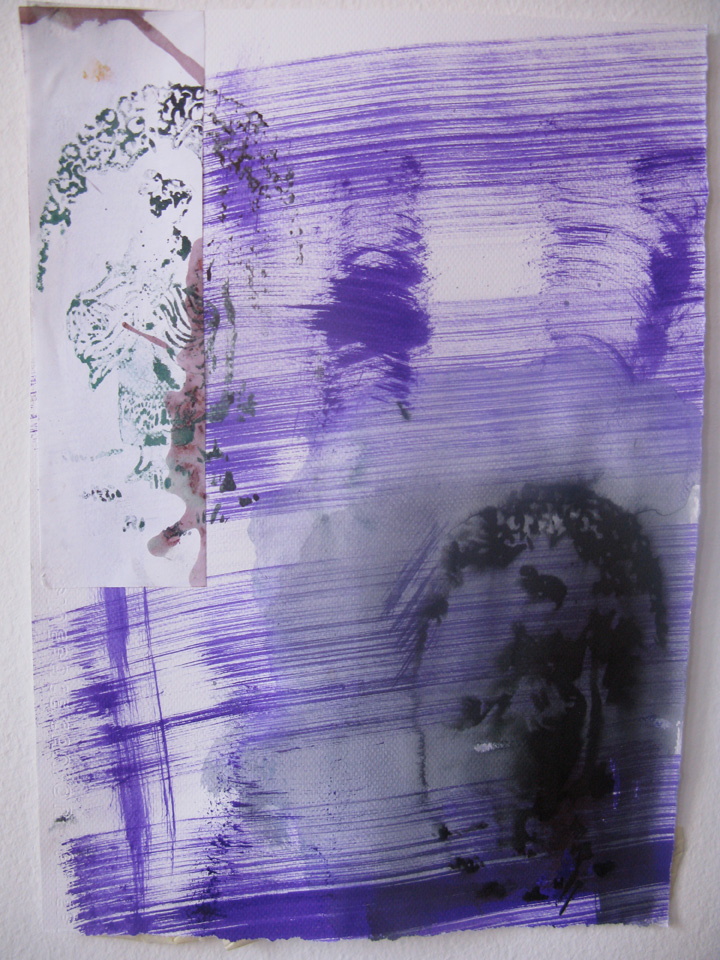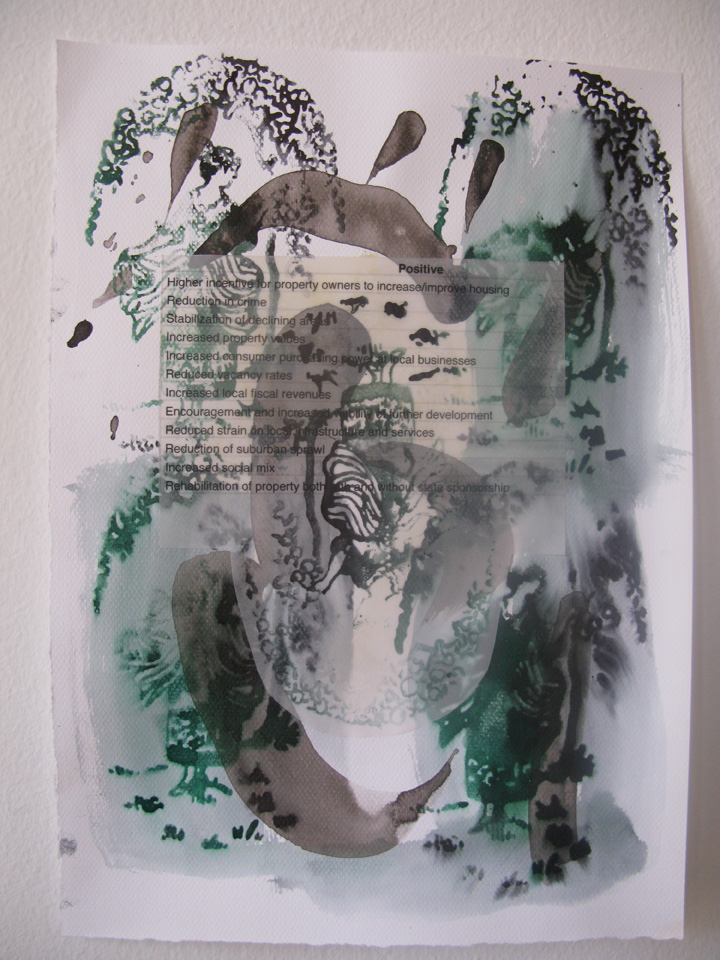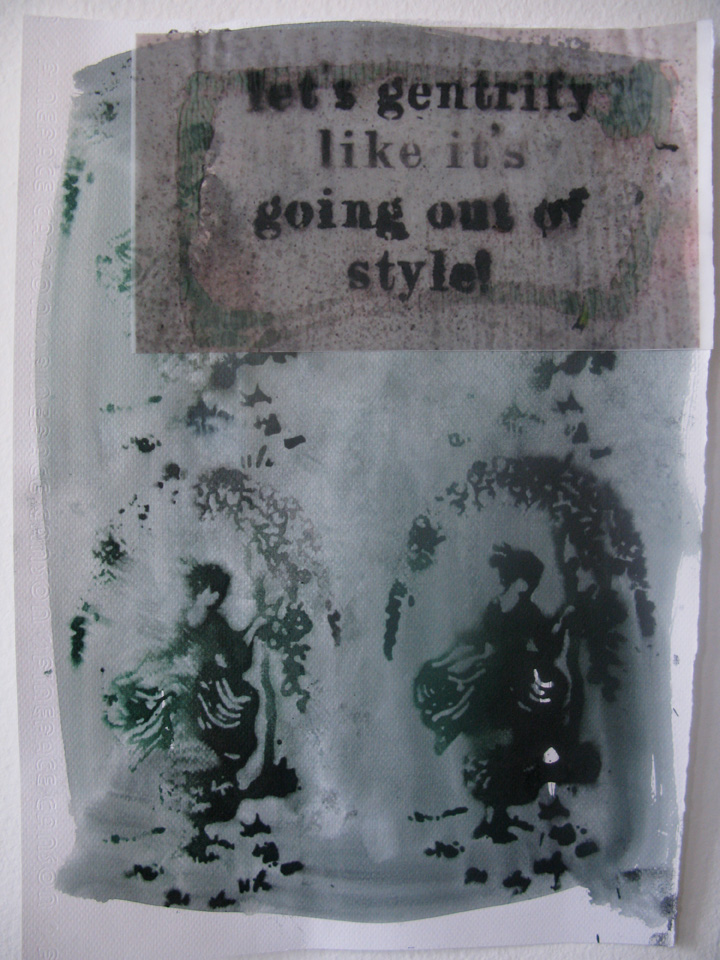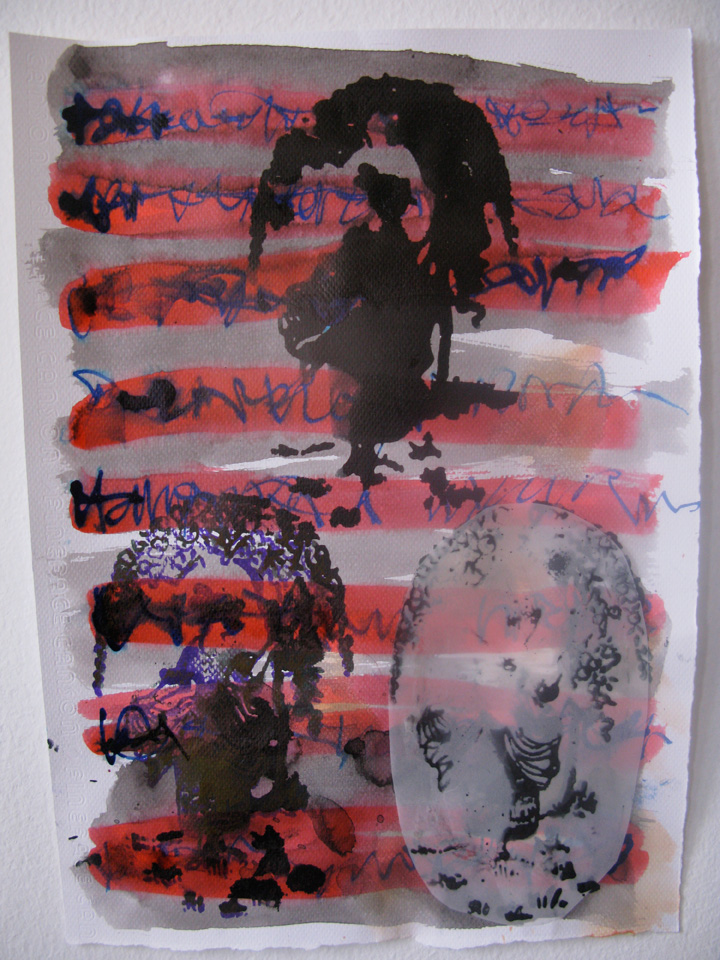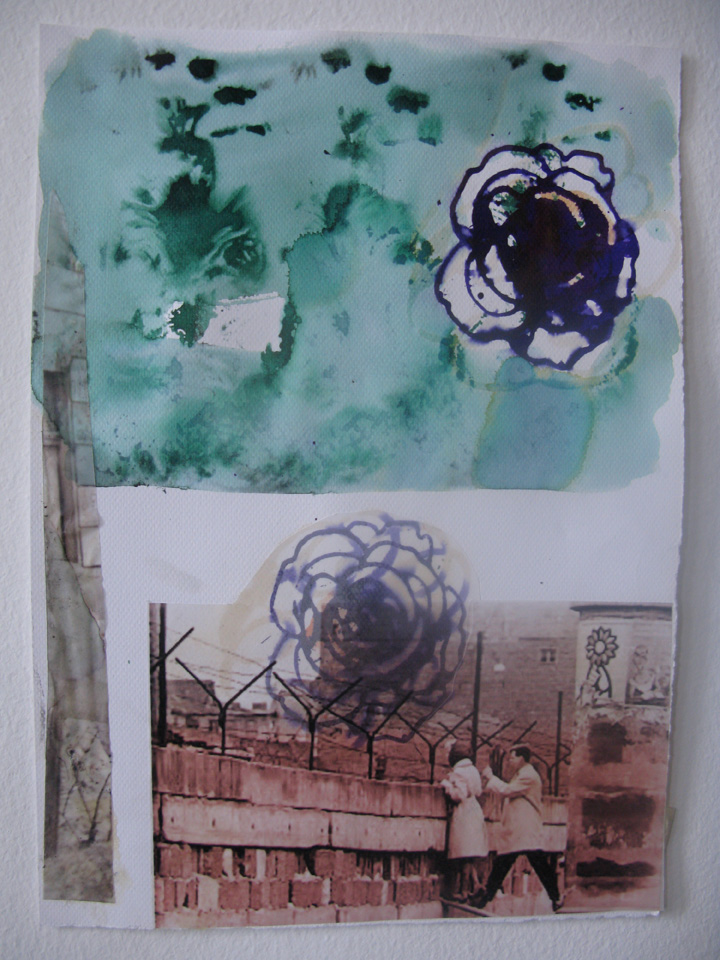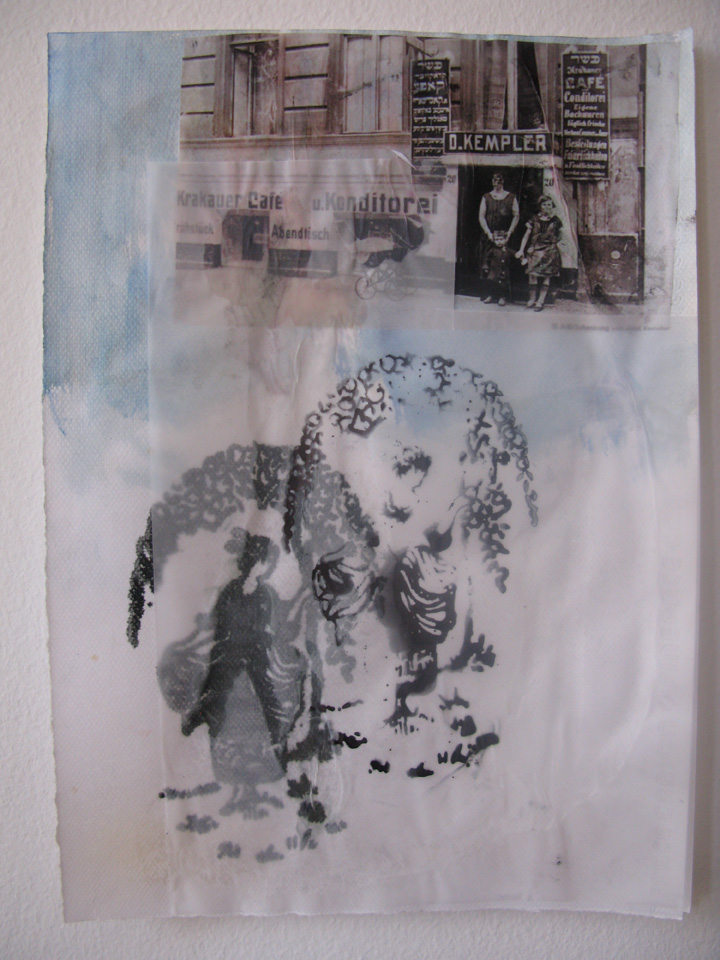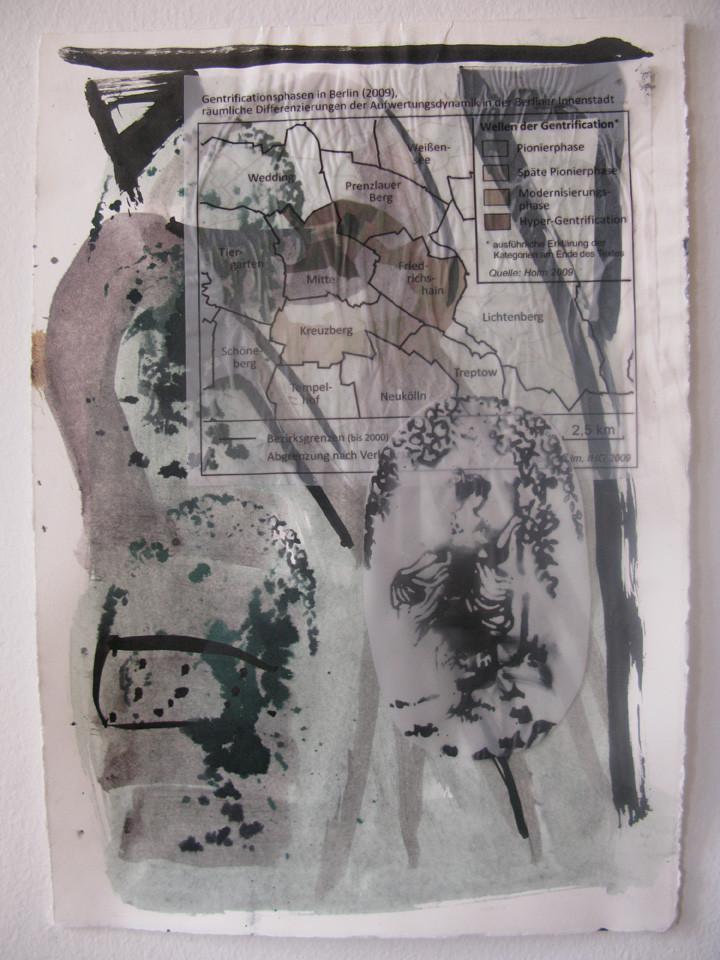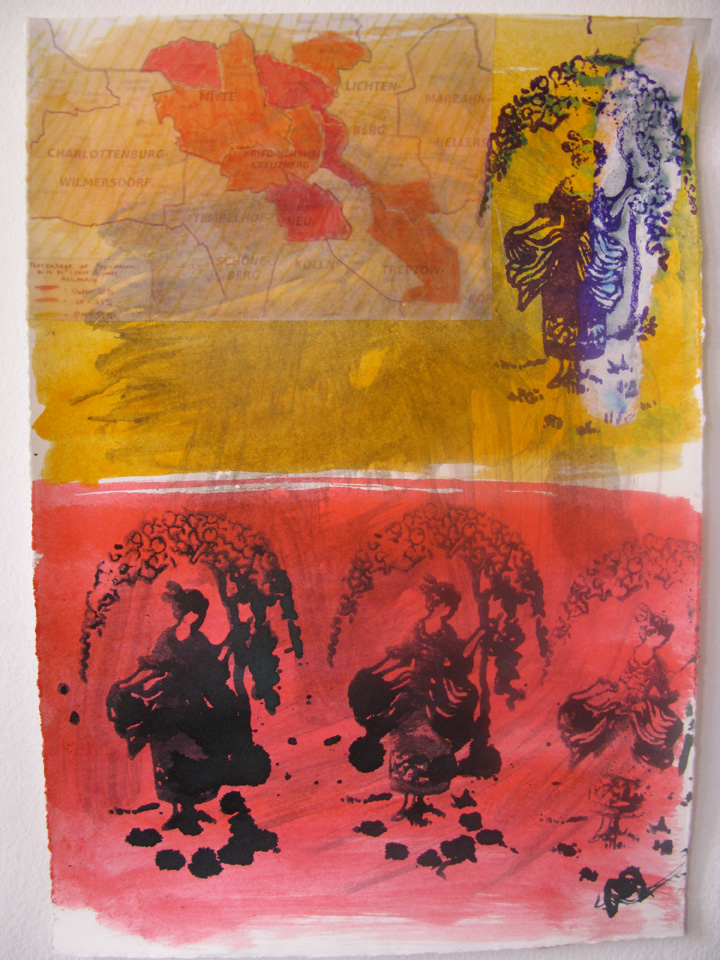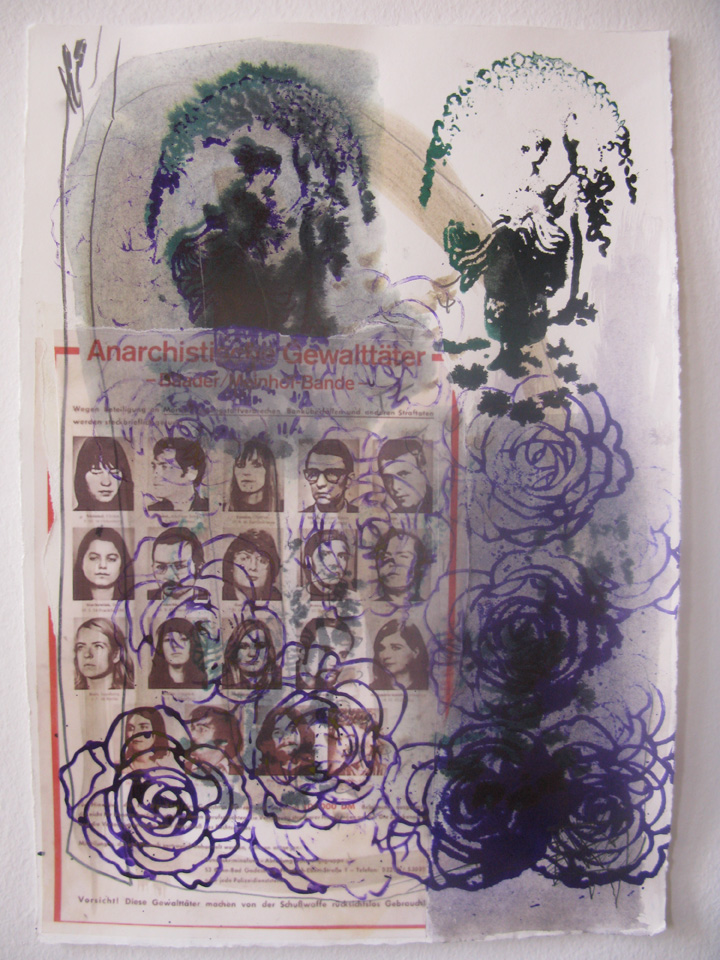Maja Bajevic, How to Explain the World to the Martians, 2013, mixed technique (ink on paper, collage)
Photo documentation: Maja Bajevic
How to Explain the World to the Martians
Lesson No.1: Gentrification
Example: The City of Berlin
People on Earth are blessed and damned by a specific absence of emotional memory. For being able to erase the unwanted memory they need to fill the gaps and traces of their own history with new emotions (we will discuss the term Emotion in another chapter), less painful. In order to do so Mankind needs to change physical spaces where painful events took place, or to empty them of their real meaning. This is a process that allows heeling (will be discussed further) but also prevents from learning. Therefore Mankind is, in a way, doomed to always repeat the same mistakes. A science has been developed, psychology, which discusses these issues but generally leaves them on the level of the Individual (will be discussed further). Another science, philosophy, is trying to explain Earth and Mankind to itself, but strangely enough only few people are interested in it.
The city of Berlin has been the stage of many painful events in the past century, today it is being gentrified.
Gentrification
gen·tri·fi·ca·tion
: the process of renewal and rebuilding accompanying the influx of middle-class or affluent people into deteriorating areas that often displaces poorer residents.
Gentrification
From Wikipedia, the free encyclopedia
Gentrification is a dynamic that emerges in poor urban areas when residential shifts, urban planning, and other phenomena affect the composition of a neighborhood.[1] Urban gentrification often involves population migration as poor residents of a neighborhood are displaced. In a community undergoing gentrification, the average income increases and average family size decreases. This generally results in the displacement of the poorer, pre-gentrification residents, who are unable to pay increased rents, and property taxes, or afford real estate. Often old industrial buildings are converted to residences and shops. New businesses, which can afford increased commercial rent, cater to a more affluent base of consumers—further increasing the appeal to higher income migrants and decreasing the accessibility to the poor. Often, resident owners unable to pay the taxes are forced to sell their residences and move to a cheaper community.[2][3]
Political action, either to promote or oppose the gentrification, is often the community’s response against unintended economic eviction.[4] However, local governments may favor gentrification because of the increased tax base associated with the new high-income residents, as well as because of other perceived benefits of moving poor people and rehabilitating deteriorated areas.
As rent-gap theory would predict, one of the most visible changes the gentrification process brings is to the infrastructure of a neighborhood. Typically, areas to be gentrified are deteriorated and old, though structurally sound, and often have some obscure amenity such as a historical significance that attracts the potential gentrifiers.[17] Gentry purchase and restore these houses, mostly for single-family homes. Another phenomenon is “loft conversion,” which rehabilitates mixed-use areas, often abandoned industrial buildings or run-down apartment buildings to housing for the incoming gentrifiers.[17] While this upgrade of housing value is the superficial keynote to the gentrification process, there is a greater number of less-visible shifts the gentry bring with them into their new neighborhoods.
